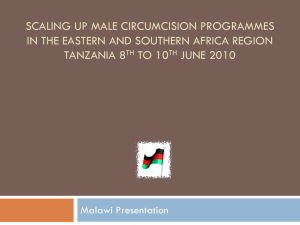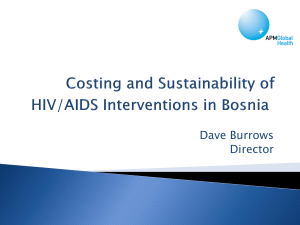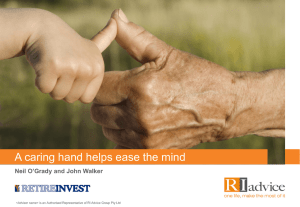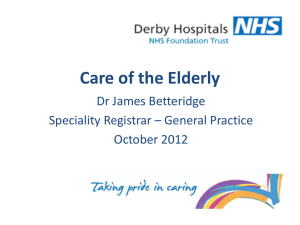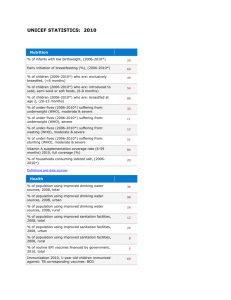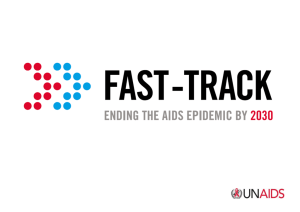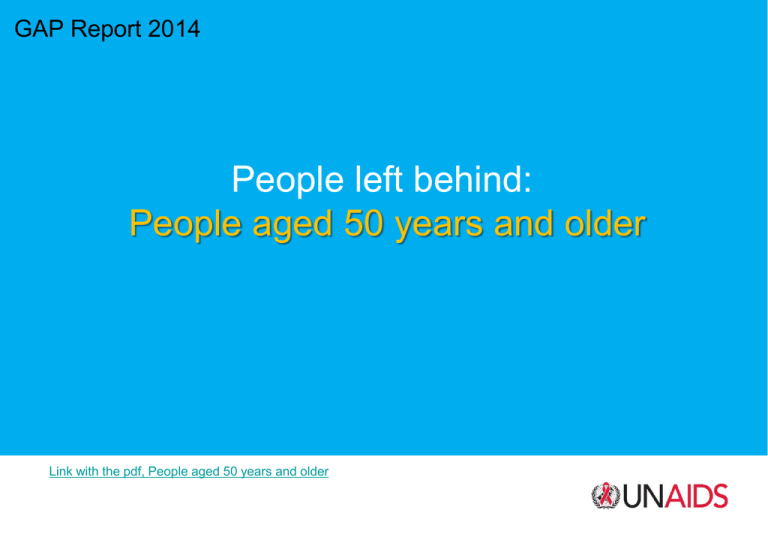
GAP Report 2014
People left behind:
People aged 50 years and older
Link with the pdf, People aged 50 years and older
I am 50+.
I face these issues.
HIV Burden
• There are 4.2 million people aged 50 and older living with HIV today.
• More than 2 million people aged 50 and older live in sub-Saharan Africa,
which accounts for 60% of all people living with HIV over the age of 50.
• Thirteen per cent of the adult population living with HIV is aged 50 or older.
• Approximately one out of five people living with HIV who are aged 50 and
older live in western and central Europe and North America.
• The number of people living with HIV in low- and middle-income countries
aged 50 or older continues to grow, representing 12% of all adult people living
with HIV in 2013.
• Every year, 100 000 people in low- and middle-income countries aged 50 and
older acquire HIV. Seventy-four per cent of this population lives in subSaharan Africa.
Estimated number of people living with HIV aged 50
and older by region, 1995–2013
Source: UNAIDS 2013 estimates.
Why people over the age of 50 are being left behind
• The ageing of the world’s population is one of the most significant
demographic trends of this era, and there are a growing number of people
aged 50 and older living with HIV in the world today.
• With the size of this demographic growing, there will be an increased
need for long-term access to HIV and other health services.
• A large proportion of people aged 50 and older are sexually active. Like
younger people, people aged 50 and older also need HIV services,
although their needs are often overlooked, neglected or ignored.
WHY PEOPLE OVER THE AGE OF 50
ARE BEING LEFT BEHIND
THE TOP 4 REASONS
01 Low perception of HIV risk
02 Managing HIV and other health issues is complicated
03 Access to services
04 Stigma and discrimination
Percentage of men aged 50 and older with multiple partners who did
not use a condom during last sex in selected
countries, 2009–2012
Source: Demographic and Health Surveys (further analysis by UNAIDS).
Percentage of men aged 50 and older living with HIV who have never
been tested for HIV in selected countries, 2007–2011
In a South African study, 30% of
the people living with HIV aged
50 and older were found to have
two or more chronic medical
conditions.
Source: Demographic and Health Surveys (further analysis by UNAIDS).
Experiences by people living with HIV aged 50
and older in Cameroon
Health services are not
geared towards people
aged 50 and older
living with HIV.
52% had their status
24% did not
88% are on
disclosed without
their consent
receive any
counselling
antiretroviral therapy
Source: People Living with HIV Stigma Index Report, Cameroon. HIV Leadership through Accountability Programme, GNP+, and
RéCAP+, 2012.
Life expectancy among people reaching age 50 at one, two,
three, four and five years after the start of antiretroviral
therapy in the United Kingdom
Source: Based on data from Margaret T. et al. Impact on life expectancy of HIV-1 positive individuals of CD4+ cell count and viral load
response to antiretroviral therapy. AIDS. 2014;28(8):1193–1202 and UK national statistics.
CLOSING THE GAP
HOW TO CLOSE THE GAP
01 Early HIV detection and treatment
02 Integration of services
03 Psychological and medical support
04 Social protection



